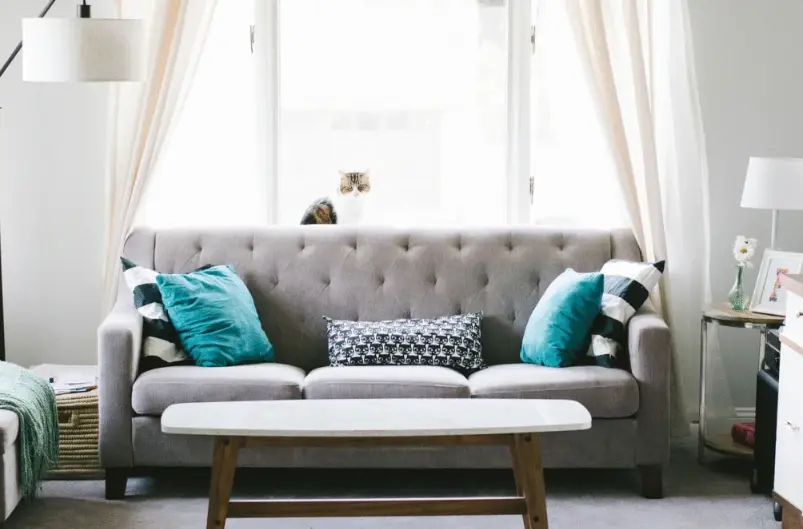Feelings are not restricted, no matter how small the room is. To make a small room seem relaxed and inviting, there are many effective strategies. Changing walls or buying larger furniture is not enough in itself; our perceptions must change, too. How we feel about a room is an issue of light, color, and design to a considerable extent.
Evaluate small rooms such as bedrooms, offices, or living areas and find ways to make the spaces seem more spacious. Where you can see and touch almost everything, from what the room is painted to the color of furniture, it carries burdens down to being sheer pleasure. For homeowners planning renovations or small-scale upgrades to maximize space, working with trusted resources can help — Lending Bee Inc’ hard money rates provide flexible financing options for projects of any size.
It can be difficult for a space to feel extremely confined without breaking the budget or making things messy and difficult. This brief guide offers a series of ideas on how you might achieve more spaciousness in compact quarters. The set suggestions will help you realize refuge in smaller places.
Light and Color: The Fastest Way to Open Up a Room
To change the perceived size of a room, one commonly used method is to change the lighting and color scheme. Light spaces give the illusion of larger areas. Lighter shades will bounce back more illumination than darker and richer colored tones, by reflecting the photons from our energy-saving bulbs.
When using the lighter colored walls that people like so much, you can immediately break into Silicon Space. But with colors of opposite quality–darker ones in particular–your room could well feel cramped and narrow in scale. These highlights are most suitably used in a baseboard of the wall upon which stands, say, a sofa with adjuncts such as bric-a-brac or photograph frames.
Hence, paint the upper part of your walls and ceiling a color slightly lighter for a spacious and airy feeling. They reflect light and even a bit of brilliance here and there, such as while replacing lightbulbs with other ones that are just a fit. After all is said and done, it means that a tiny space has been turned into an area amenable to living by the joint application of light and color.
Furniture Choices That Make a Room Feel Bigger
It can open out or draw in a room. Reduced to the bare essentials. Low-key expensive taste and do not crowd with excess furniture. Be sure to choose furniture appropriate for your area- large pieces will take up a lot of visual space, even if they fit perfectly in that room. The following are some key steps when selecting and arranging furniture in smaller spaces:
- Multiuser furniture: couches and loveseats that morph into pull-out beds; desk beds (hidden behind the face of a desk) or a coffee table with drawers add serene space, which equals more square footage to enjoy.
- Light or transparent materials: Wooden or glass chairs let the eye go on rather than block it out, the way you see through lines of seats in a theater.
- The placement of objects: Set furniture slightly away from walls, keep aisles open, and ensure that floor space does not become cluttered.
- Simplicity in design, simple lines: low-to-the-ground furniture: Don’t spoil those unencumbered expanses of light and space with lots of carving or loud patterns.
No matter how large or small, all rooms can become three-dimensional functional spaces. Use these principles and it is simple to design yourself a cozy, every-piece-of-ground-mattered living room within which nothing anyone would dream of sitting down on would crowd into another.
Mirrors, Windows, and Natural Light Tricks
Mirrors are placed as prescribed in the Principles of Design, to reflect light and give an impression of greater space. The illusion of an enlarged dimension is produced by a full-length mirror projecting from one wall, while a mix-and-match set of small mirrors can also be effective in helping re-size a narrower room without looking overfilled.
Artificial light, as well as the illusion of daylight, can evoke. Lamps arranged in different places and at different angles–such as ceiling lamps, wall lights, and floor lamps– will inject a sense of space deep into the room without casting shadows. Being at an elevated height above all, it yields no accidental images below. In addition, strategically placed corner lights or lights near reflective surfaces will also give an impression of natural light, making the long, narrow areas seem more open.
Even quite simple tricks, such as painting window frames the same color as the walls or using glass and translucent divisions to reduce the visual impact of obstacles, make fine contributions to this effect. By using mirrors, light, and windows which are unburdened with unnecessary obstructions, it is possible to establish a much increased sense of space within tight areas – bringing both elegance and practicality together.
Also Read-

